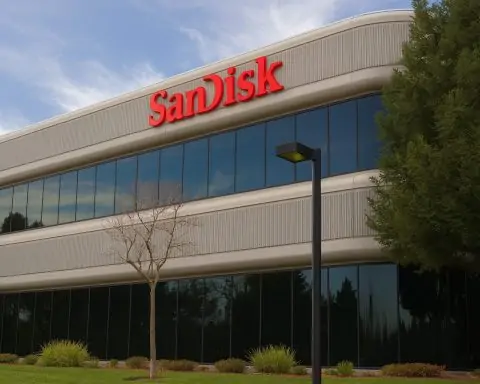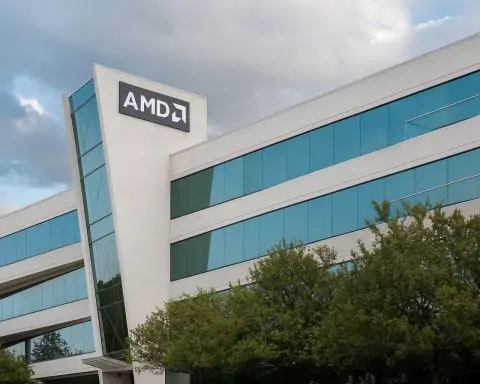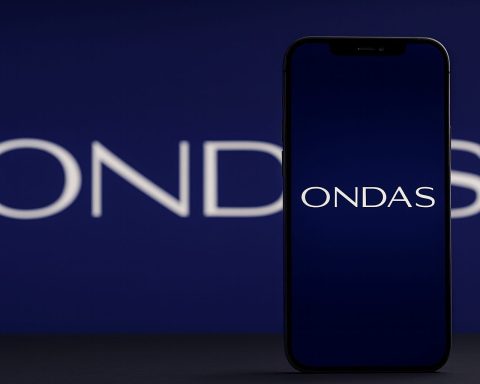Published 27 November 2025
A new phase for AI: from keyboards to kilowatts
On 27 November 2025, industrial AI stopped being a slide in a boardroom deck and became something you can literally bump into on the factory floor.
Following this month’s Industrial X Unleashed event in New York, enterprise software provider IFS has moved fast to turn its big-stage announcements into concrete deployments. Today’s news cycle is dominated by:
- A new autonomous AI‑robotics system from IFS and Boston Dynamics, built to patrol plants, substations and mines without a human in sight. [1]
- Anthropic’s push into industrial AI, via Resolve, a multimodal AI platform developed with IFS Nexus Black to support frontline engineers instead of office workers. [2]
- A fresh Executive Intelligence podcast with Kriti Sharma, CEO of IFS Nexus Black, spelling out what it really takes to make autonomous and “agentic” AI safe, useful and ethical in high‑risk environments. [3]
Together, they sketch a clear direction of travel: the next wave of AI money and innovation is heading toward assets, grids and fleets, not just documents and emails.
Inside the IFS–Boston Dynamics autonomous robotics system
Coverage from TechAfrica News and SSBCrack News today confirms that IFS and Boston Dynamics have formally unveiled their joint autonomous AI‑robotics solution for industrial operations. [4]
At its core:
- Boston Dynamics Spot robots roam industrial sites – refineries, substations, production lines – on pre‑planned or on‑demand inspection routes. Fitted with thermal cameras, acoustic sensors and computer vision, Spot can detect overheating equipment, listen for air or gas leaks, read analog gauges, watch indicator lights and flag spills or other hazards. [5]
- That sensor stream flows straight into IFS.ai and its agentic AI layer (including the Loops platform), which interprets anomalies, cross‑checks enterprise data and then automatically opens work orders, adjusts maintenance schedules or escalates serious incidents. [6]
It’s essentially a closed loop:
robot senses → AI understands → enterprise system decides → robot or crew acts
Rather than bolting a chatbot onto an existing system, IFS is trying to orchestrate a full “sense–think–act” pipeline that spans physical robots, industrial data and back‑office workflows.
Safety, efficiency and uptime: the three metrics that matter
Across official press materials and today’s news write‑ups, IFS and Boston Dynamics keep coming back to three numbers that resonate strongly in asset‑heavy sectors: safety, efficiency and uptime. [7]
- Safety – Robots take on hazardous inspections in high‑voltage yards, chemical plants, offshore platforms or confined spaces. More frequent, automated patrols mean more chances to catch problems before they hurt someone.
- Efficiency – Because Spot uploads rich data into IFS.ai, the system can triage issues, route the right crew with the right parts, and reduce wasted call‑outs.
- Uptime – Combining thermal, visual, vibration and process data allows predictive models to spot degradation early and schedule maintenance during low‑impact windows, rather than during a million‑dollar outage. [8]
SSBCrack’s report notes that large utilities such as Eversource see this as a path from reactive to predictive maintenance: instead of waiting for alarms or outages, AI‑driven robots continuously sweep substations and automatically prioritise work so human crews focus on the highest‑risk jobs. [9]
Why Anthropic and IFS say industrial AI matters more than office AI
Two days ago, TechInformed framed Anthropic’s move into heavy industry with a bold thesis: industrial AI will matter more than office AI. [10]
At Industrial X Unleashed, IFS Nexus Black and Anthropic unveiled Resolve, billed as the first in a family of industrial‑grade AI solutions built on Claude. Resolve is deliberately aimed at frontline workers in:
- aerospace and defence
- construction and engineering
- manufacturing
- energy, utilities and natural resources
- telecoms and field‑service‑intensive sectors [11]
From documents to devices: multimodal AI in the plant
Unlike many office‑focused copilots that mostly process text, Resolve is designed from day one as a multimodal system:
- It ingests video, audio, thermal imagery and vibration data, plus traditional sensor readings and technical schematics. [12]
- It provides step‑by‑step guidance to technicians via mobiles or rugged tablets: from diagnostics suggestions to repair procedures.
- It can predict upcoming faults, recommend when to take an asset offline and auto‑generate compliance and maintenance paperwork based on voice notes and sensor logs. [13]
Anthropic’s applied AI lead Garvan Doyle told the New York audience that most progress so far has come from digital‑only tasks like coding or financial modelling – simulations where bad output is annoying, but not catastrophic. In contrast, when AI touches the physical world, mistakes can damage equipment, safety or the environment. [14]
His takeaway: AI might feel overhyped in office workflows, but it is “underhyped” in industrial settings where the commercial and societal stakes are far higher. [15]
Early proof points: whisky, weather events and the grid
IFS and Anthropic are already sharing early customer numbers to back up the industrial AI narrative.
A Scottish distillery’s £8.4 million use case
At William Grant & Sons – the company behind Grant’s whisky and Hendrick’s gin – engineers historically tackled a large share of repairs as emergencies rather than planned interventions. Resolve now analyses process diagrams, sensor histories and onsite imagery to flag abnormal patterns before breakdowns occur.
IFS and the distiller jointly project around £8.4 million in annual savings at a single site once the rollout is complete, thanks to reduced unplanned downtime and better scheduling. [16]
Storms, outages and 40% faster restoration
In the energy and utilities sector, IFS claims that customers using Resolve and related Nexus Black solutions can restore power up to 40% faster after major storms or other disasters. Predictive analytics help planners pre‑position crews and equipment ahead of bad weather, while image‑ and video‑based diagnostics speed up on‑site triage. [17]
Those are headline numbers vendors will need to keep proving over time – but if replicated across large transmission and distribution networks, they translate directly into regulatory performance, customer satisfaction and avoided penalties.
Agentic AI, digital workers and robots: IFS’s broader Industrial X play
Today’s robotics announcement and Anthropic partnership sit inside a bigger strategic push: IFS Industrial X.
Analyst coverage from Futurum Group describes Industrial X Unleashed as IFS’s attempt to reposition itself not just as an ERP vendor, but as an “industrial AI orchestrator” for complex operations. [18]
Key elements include:
- IFS Loops Platform – a library of out‑of‑the‑box digital workers with “agentic” skills, such as:
- Supplier Order Manager, which can process huge volumes of purchase orders
- Inventory Replenisher, which optimises stock across volatile supply chains
- Field Technician Auto‑Triage, which routes jobs and suggests fixes based on historical data and live inputs [19]
- A focus on narrow, high‑value workflows that demand extreme reliability – IFS talks about aiming for “five‑nines” (99.999%)‑level accuracy in some scenarios, a bar generic office copilots simply don’t target. [20]
- A web of partnerships with Anthropic (AI models), Boston Dynamics and 1X (robotics), and Siemens (infrastructure and OT expertise) to bridge IT, OT and physical automation. [21]
The Boston Dynamics deal is therefore less a standalone curiosity and more one piece of a larger thesis: orchestrating humans, digital agents and physical robots around shared industrial data.
Kriti Sharma: from “AI for Good” to hard hats and hi‑vis
A lot of this strategy runs through Kriti Sharma, the CEO of IFS Nexus Black, who features in both IFS’s leadership bios and this week’s podcast coverage. [22]
Before joining IFS, Sharma built AI products at Thomson Reuters, Sage and GfK and became known for leading “AI for Good” initiatives tackling social challenges such as access to justice and domestic abuse support. She’s been recognised by Forbes 30 Under 30, the UK Prime Minister’s Points of Light award and the UN’s Young Leaders programme for her work on responsible AI.
Now, as CEO of Nexus Black, she’s swapped conference stages for hi‑vis vests and steel‑toe boots, spending time in plants and depots with engineers – something highlighted both in diginomica’s Executive Intelligence podcast and external profiles. [23]
In press statements on the Anthropic partnership, Sharma has argued that:
- The “real AI revolution” is happening in “hardcore” industries where jobs involve power grids, planes, mines and manufacturing lines, not slide decks. [24]
- Safety and responsibility are non‑negotiable when AI decisions can affect human lives or critical infrastructure.
- Industrial AI must be fast to deploy, measurable in business outcomes and grounded in deep domain expertise rather than generic models. [25]
The new podcast episode released today explores whether autonomous AI is truly viable in industrial settings, and if so, how it should be governed, monitored and constrained so that frontline workers can trust it. [26]
Industrial AI vs office AI: what changes for CIOs and operations leaders?
Taken together, the announcements and coverage around 27 November 2025 crystallise a few clear shifts for enterprise decision‑makers:
1. The centre of gravity moves to the field
With IFS talking about 70% of the global workforce being deskless, the focus is turning from office automation to work done in hard hats, cabs and control rooms. [27]
That means:
- Tools must work offline or in patchy connectivity.
- Interfaces need to be simple, rugged and voice‑friendly, not just pretty web apps.
- Data pipelines must bridge OT systems, historians and cloud analytics, not just CRM and email. [28]
2. Multimodal and real‑time is the new default
Industrial AI platforms like Resolve must handle live video, thermal maps, acoustic signatures and time‑series telemetry in near‑real time, not just batch‑processed logs. That raises the bar for:
- Edge computing and on‑site inference
- Clever compression and streaming of inspection data
- Robust governance for AI decisions that may have safety implications [29]
3. Robot + AI + human = one workflow
The Boston Dynamics collaboration underlines that robots can’t be treated as separate projects. Their value only appears when:
- Their routes and tasks are orchestrated by AI agents that understand business priorities.
- Their findings automatically update maintenance, asset management and supply‑chain systems.
- Human technicians see robots as teammates: machines that handle the boring, dirty or dangerous jobs while they focus on expert decisions. [30]
4. Risk, ethics and regulation get more serious
Anthropic’s messaging at Industrial X was clear: multiplying AI in the physical world also multiplies risk. Observers note that safety‑first design, traceability and rigorous testing will be essential for winning regulators’ trust, especially in energy, aviation and defence. [31]
Kriti Sharma’s background in responsible AI and her new role at Nexus Black suggest that IFS wants to compete on this dimension, not just speed or features. [32]
What leaders should watch next
For CIOs, COOs and heads of operations, the next 12–24 months will likely determine whether industrial AI delivers on the hype. A few practical questions to ask now:
- Where are our riskiest or most labour‑intensive inspections? Those are prime candidates for robotic and AI‑assisted workflows.
- Do we have the data foundations – from sensor coverage to clean asset records – that high‑accuracy AI requires?
- Which unions, regulators and safety bodies need to be involved early so deployments don’t stall on trust and governance?
- How will we measure success? Metrics like unplanned downtime, mean time to repair, near‑miss incidents and crew utilisation are more meaningful than generic “AI adoption” numbers.
Industrial AI will not be a copy‑paste of office AI. It will be slower in some ways, because the stakes are higher – but when it works, the impact runs through energy security, supply‑chain resilience and worker safety, not just productivity dashboards.
If today’s announcements are any indication, the next big AI story may not be about who writes your emails faster. It’ll be about which robots are patrolling your plant at 3 a.m., which models are watching your grid – and who is accountable when they act.
References
1. techafricanews.com, 2. techinformed.com, 3. diginomica.podbean.com, 4. techafricanews.com, 5. techafricanews.com, 6. www.enlit-europe.com, 7. www.enlit-europe.com, 8. futurumgroup.com, 9. news.ssbcrack.com, 10. techinformed.com, 11. techinformed.com, 12. techinformed.com, 13. techinformed.com, 14. techinformed.com, 15. techinformed.com, 16. techinformed.com, 17. www.ifs.com, 18. futurumgroup.com, 19. futurumgroup.com, 20. futurumgroup.com, 21. futurumgroup.com, 22. diginomica.podbean.com, 23. muckrack.com, 24. www.ifs.com, 25. engtechnica.com, 26. diginomica.podbean.com, 27. techafricanews.com, 28. futurumgroup.com, 29. techinformed.com, 30. www.enlit-europe.com, 31. www.constellationr.com, 32. diginomica.podbean.com










